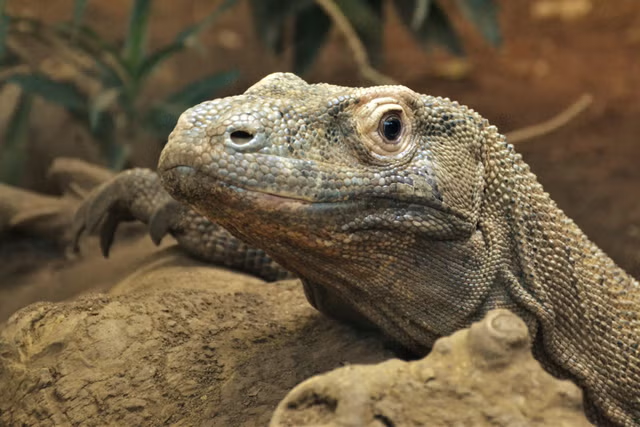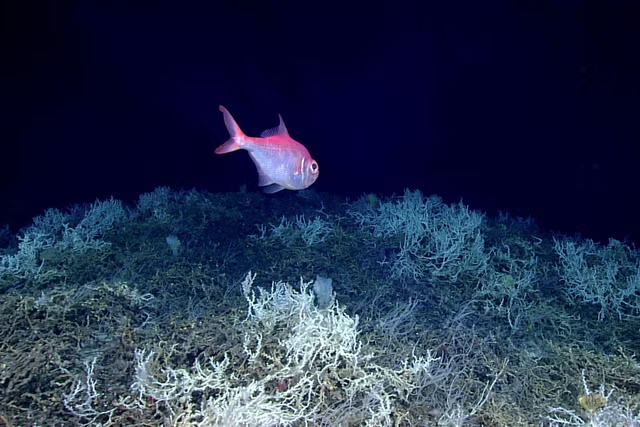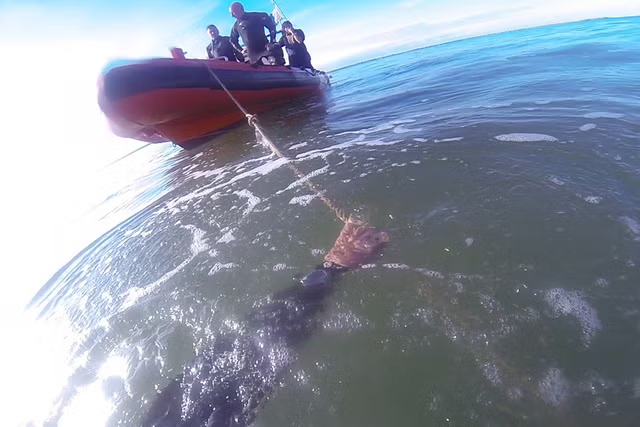Don't tell the producers of Jurassic World, but dinosaurs like Tyrannosaurus rex may have grown even larger than we previously thought, based on the fossils they left behind.
This is the conclusion of paleontologists from Canada and the U.K., who say that some T. rex individuals may have reached 49 feet long—25 percent longer than once thought.
This would have translated to an even larger increase in mass of some 70 percent, bringing the heaviest from 9.7 to a whopping 16.5 tons.
The reason we didn't have a sense of their true maximum sizes until now, the team explained, is that T. rex are known from only a limited number of specimens—about 100 in total, and only a few dozen of which are well-preserved.
As a result, it is extraordinarily unlikely that the fossils we have found to date represent the largest individuals that ever lived.
Despite this, we can predict how big dinosaurs like T. rex might have gotten, as well as the odds of one day unearthing a proper king-sized "king of the dinosaurs."
"Our study suggests that, for big fossil animals like T. rex, we really have no idea from the fossil record about the absolute sizes they might have reached," said paper author and paleobiologist Jordan Mallon, of the Canadian Museum of Nature, Ottawa, in a statement.
"It's fun to think about a 15-tonne [16.5-ton] T. rex, but the implications are also interesting from a biomechanical or ecological perspective."
In their study, Mallon and paleontologist David Hone of Queen Mary University of London created a digital model of a 140-million-strong population of T. rex.
This is at the lower end of previous estimates for how many T. rex ever lived; in fact, the same study also suggested the total population may have reached into the billions.
"We picked the lower estimate (140 million) because my computer choked on a dataset of 2.5 billion individuals!" Mallon told Newsweek.
The duo chose to focus on T. rex in particular, they explained, because it is a dinosaur species with which scientists are relatively familiar. Qualities such as growth rate, lifespan, population size, and the incompleteness of its fossil record are well estimated.
To inform the modeling of body size variance in adult T. rex, the researchers turned to living alligators, which sport both large sizes and a relatively close kinship with dinosaurs.
The researchers found that the largest-known fossils of T. rex found to date likely fall into the top 1 percent of the species' range of adult body sizes.
Furthermore, the model predicted that the largest T. rex that ever lived likely measured some 49 feet from head to tail—compared to the longest-known fossilized specimen, which reached only around 39 feet in length—with analysis suggesting such would have weighed in at a solid 16.5 tons.
With their initial study complete, the duo say that the next logical step would be to assess whether a 16.5-ton T. rex would actually be biologically feasible.
"There may have been ecological or biomechanical constraints that prevented T. rex from actually reaching such a huge size," Mallon explains.
"But, given our back-of-the-envelope calculations, we think it may have been possible (if extremely rare)."
Sadly, the chances of finding this superlative individual are incredibly small. It may not even have made it into the fossil record.
And those hoping to see a museum display of another T. rex close to it in size will likely have a while to wait, the team predicts.
Based on the current rate of scientific excavation, to find a T. rex with a body size in the top 0.01 percent of all individuals, paleontologists will likely have to spend around a thousand more years fossil hunting, the model suggests.
While the researchers' findings are based on mathematical estimates, there is evidence to suggest that the fossil record does indeed have treats in store for us yet.
"Some isolated bones and pieces certainly hint at still larger individuals than for which we currently have skeletons," Hone said in a statement.
"It's important to stress that this isn't really about T. rex, which is the basis of our study, but this issue would apply to all dinosaurs, and lots of other fossil species."
A good example, Mallon added, is Giganotosaurus—a big meat-eating dinosaur whose fossils have been unearthed in Argentina, and which is often touted as having been larger than T. rex.
"But it's only known from a few good fossils, so we really have no idea if was truly bigger on average, because we can't get a good estimate of the average," he said.
"It doesn't make sense to compare the body sizes of fossil species known from scanty remains.
"There are some extinct species—mammoths, for example—for which we have (or can get) enough fossils to produce a decent estimate of their maximum size, the team explained. Other groups like birds and mammals, in contrast, tend to be more constrained in the sizes they reach.
"But dinosaurs as a whole and then things like large fossil sharks and crocs […] would be in the same general boat here as our model since they are known from a handful of specimens," Hone told Newsweek.
"Taking the biggest of these as 'maximum size' hits all the same issues we outline in our work."
The full findings of the study were published in the journal Ecology and Evolution.
Do you have a tip on a science story that Newsweek should be covering? Do you have a question about paleontology? Let us know via science@newsweek.com.
Disclaimer: The copyright of this article belongs to the original author. Reposting this article is solely for the purpose of information dissemination and does not constitute any investment advice. If there is any infringement, please contact us immediately. We will make corrections or deletions as necessary. Thank you.



